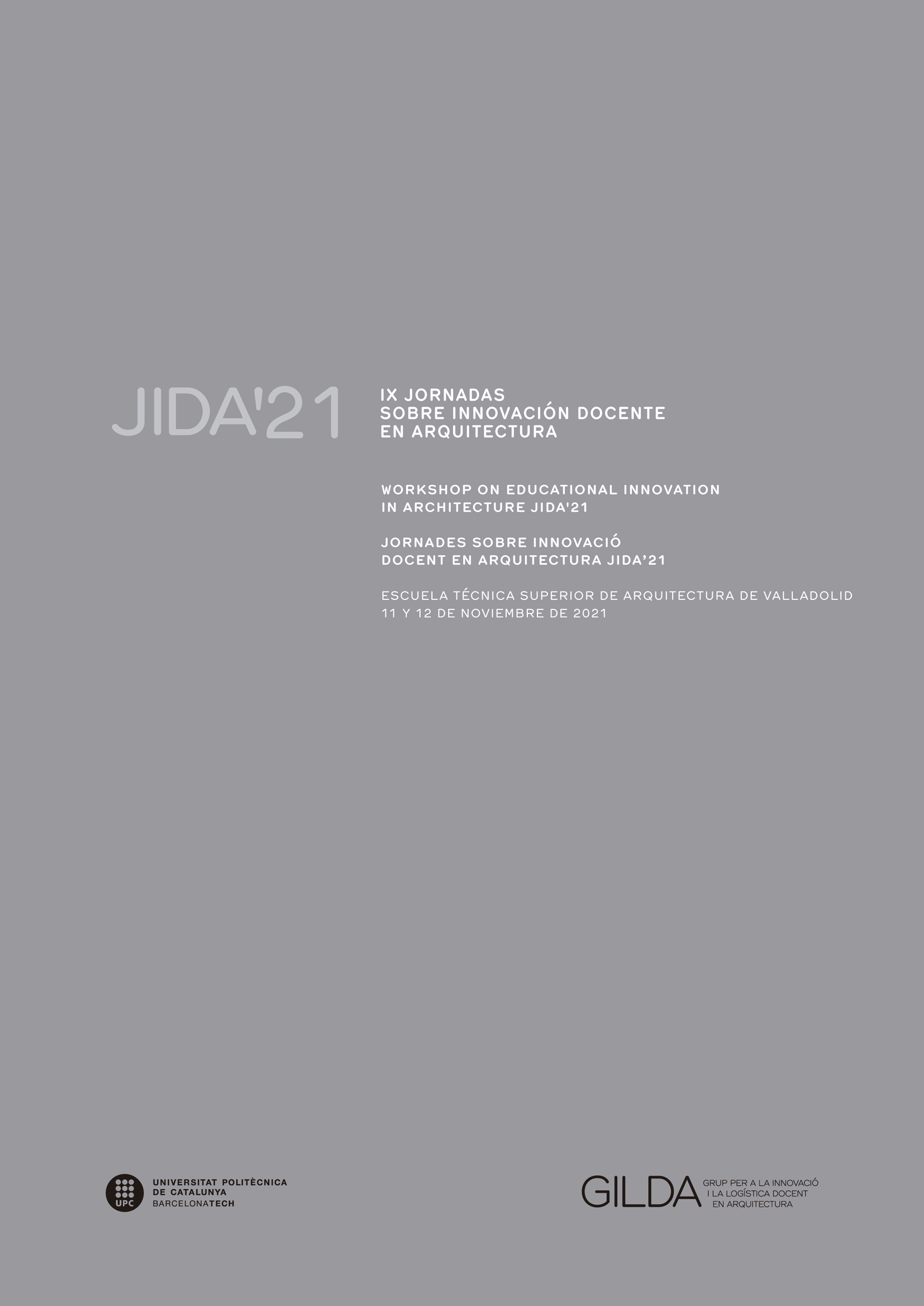From Forms to Flows: an Approach to the [Eco]systemic Urban Project
DOI:
https://doi.org/10.5821/jida.2021.10578Keywords:
urban project, metabolism, urbanism, ecosystemic, urban fabricAbstract
The awareness of the effects of climate change set significant challenges to urbanism, requiring transdisciplinary approaches capable of giving efficient responses for the contemporary city and territory. A teaching programme set up in the framework of academic cooperation with other European schools through competitive Erasmus+ projects has explored the potential of urban metabolism at the scale of the urban project. Throughout several courses, the analytical and design reflection on the principles of sustainable development has been addressed at the scale of the urban fragment, testing tools, interpreting strategies and coming up with new design projects, merging rigorous and speculative approaches. Through a continuous exploration among students and teachers, some examples of what could be called [eco]systemic urbanism projects have been discussed and illustrated, going beyond the basic application of environmental standards and technical codes.
References
ARNOLD, C.L. y GIBBONS, C.J. (1996). Impervious Surface Coverage: The Emergence of a Key Environmental Indicator. En Journal of the American Planning Association, 62(2). <https://doi.org/10.1080/01944369608975688>
BERGEVOET, T. y VAN TUIJL, M. (2016). The Flexible City. Sustainable Solutions for a Europe in Transition. Nai 010 Publishers.
CROSAS, C. y PEREA, J. (2018). Barcelona Metropolis. Interplay between Urban Project and Urban Metabolism. En G. Grulois, M. C. Tossi, y C. Crosas (Eds.), Designing Territorial Metabolism. Barcelona, Brussels and Venice. Jovis.
DANNEELS, K. (2018). Historicizing Ecological Urbanism: Paul Duvigneaud, the Brussels Agglomeration and the influence of ecology on urbanism (1970-2016). En On Reproduction. Re-Imagining the Political Ecology of Urbanism. Urbanism and Urbanization Conference Proceedings.
FLEMING, W.; STEINER, F.; WHITAKER, W.; M’CLOSKEY, K.; y WELLER, R. (2009, July 10). How Ian McHarg Taught Generations to ‘Design With Nature.’ CityLab.
FORMAN, R.T.T. (2014). Urban Ecology. Science of Cities. Cambridge University Press.
GRULOIS, G. y BORTOLOTTI, A. (2015). Cogenerative Design Strategies for a Sustainable Urban Metabolism. In G. Grulos, C. Crosas, J. Perea, y N. Casabella (Eds.), En UPCycle Barcelona: Cogenerative Design Strategies for a Sustainable Urban Metabolism. LOUISE-ULB + LUB-ETSAB-UP.
GRULOIS, G. y CROSAS, C. (2015, June 15). Urban project revisited from urban metabolism principles: reflections from a workshop experience in Barcelona. En Proceedings of 8th Conference of the International Forum on Urbanism (IFoU). <https://doi.org/10.3390/ifou-D025>
LISIAS DA SILVA, C. (2008). Park Güell arquitectura conformada por el agua. Gestión hídrica para la reforestación de la montaña pelada, en Barcelona. Tesis Doctoral. Barcelona: Universitat Politècnica de Catalunya. <https://upcommons.upc.edu/handle/2117/349565> [Consulta 20 de junio de 2021]
MAYORGA, M. (2018). Nuevas tecnologías y Mapping como herramienta para promover un urbanismo interdisciplinar. En JIDA’18. VI Jornadas sobre Innovación Docente en Arquitectura. DOI: <https://doi.org/10.5821/jida.2018.5560> [Consulta 18 de junio de 2021]
McHARG, I. (1969). Design with nature. New York: Natural History Press
MOSTAFAVI, M. y DOHERTY, G. (Eds.). (2010). Ecological Urbanism. Lars Publishers. Baden.
RANZATO, M. (2017). Water vs. Urban Scape. Exploring Integrated Water-Urban Arrangements (M. Ranzato, Ed.). Jovis.
SIJMONS, D.; HUGTENBURG, J.; VAN HOORN, A.; y FEDDES, F. (2014). Landscape and Energy. Designing Transition. Nai 010 Publishers.
TERRADAS, J.; PARÉS, M.; y POU, G. (1985). Ecologia d’una ciutat. Barcelona (Ajuntament de Barcelona, Ed.).
VIGANÓ, P.; SECCHI, B.; y FABIAN, L. (Eds.). (2016). Water and Asphalt The Project of Isotropy: Vol. UFO 5. Explorations of Urbanism.






















